Best fruit trees – 10 to grow in your backyard
Grow your own backyard orchard with the best fruit trees – from traditional favorites to more unusual varieties

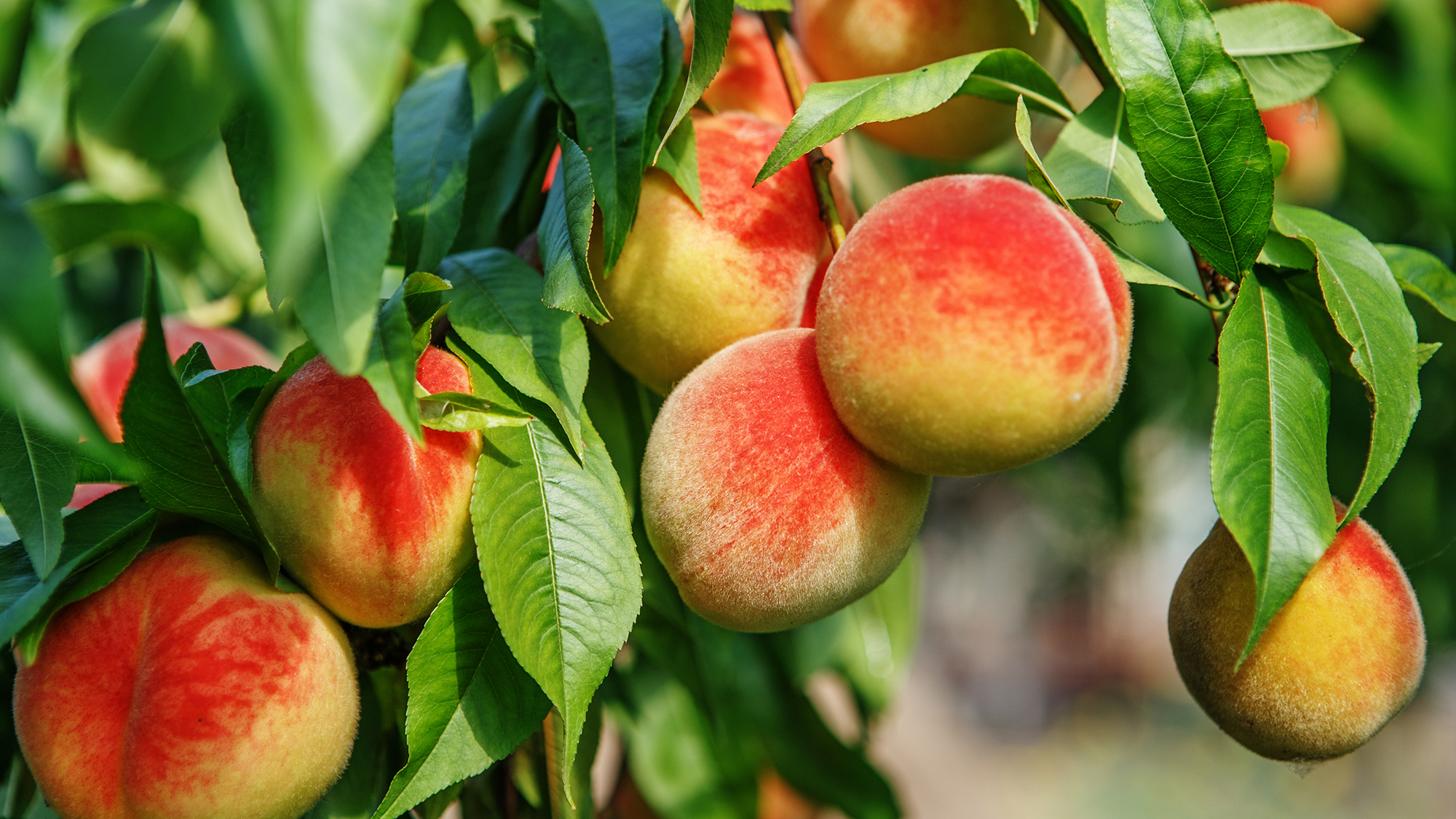
When choosing the best fruit trees to grow in your garden, prioritize the fruits you most enjoy eating.
Nurturing your own organic, home-grown fruit is simply one of the best backyard ideas. It is so rewarding and the produce tastes far superior to anything you can buy. You will also be able to grow varieties that are rarely seen at the grocery store.
‘There are lots of ways you can add fruit trees to your kitchen garden ideas, be that in a dedicated orchard, espaliered on fences, fanned across walls, grown in containers, or planted among ornamentals,’ says Period Living’s gardening expert Leigh Clapp.
Bear in mind that home-grown fruit won't look as perfect as store-bought – but that's a good thing. ‘Don’t expect the fruit to look the same unless you’re willing to use pesticides and fungicides on a regular basis,’ says Clive Harris, founder of DIY Garden.
’You shouldn't be put off by an odd shape or a few brown spots, because the flavor is so much better.'
Make sure you learn how to plant fruit trees correctly in order to get them off to a good start.
How to choose the best fruit trees for your garden
‘It's important to only choose fruit tree varieties that are suited to your area,’ says Pete Smith, arborist and urban forestry program manager at Arbor Day Foundation, who advises asking the local county extension specialists for advice.
Design expertise in your inbox – from inspiring decorating ideas and beautiful celebrity homes to practical gardening advice and shopping round-ups.
Your hardiness zone is the biggest factor in how suitable a fruit tree is for your area, although your soil type also plays a part.
‘Only buy a fruit tree that can withstand your temperatures – otherwise blossom won’t appear and that means no fruit,’ says Harris.
You also need to know whether cross-pollination will be necessary, as a number of fruit trees aren’t self-fertile. This means you won’t get a good crop without at least one partner tree.
'Check whether your preferred tree requires two different varieties to cross-pollinate and bear fruit,’ adds Smith.
If you are short on space and need a fruit tree for a small garden, then there is another solution: ‘A "family" fruit tree of apples, pears, plums or cherries may be ideal for a small space as they consist of two or three compatible varieties grafted onto the one tree that are selected to cross-pollinate with one another,’ says Clapp.
Whether you have a large or small garden, you also need to choose the right rootstock for your fruit tree.
'These will dictate the overall height and vigour of growth you will have. Some fruit trees are grafted onto dwarfing rootstocks to be more manageable, but in an exposed site a vigorous tree would cope better,' says Clapp.
Happily, most fruits are available in a range of sizes, from dwarf trees, which are a some of the best trees to grow in pots, to large trees that will make an impact in your garden design.
So, with our pick of the best fruit trees, you will find one to grow in every situation.
1. Apple tree
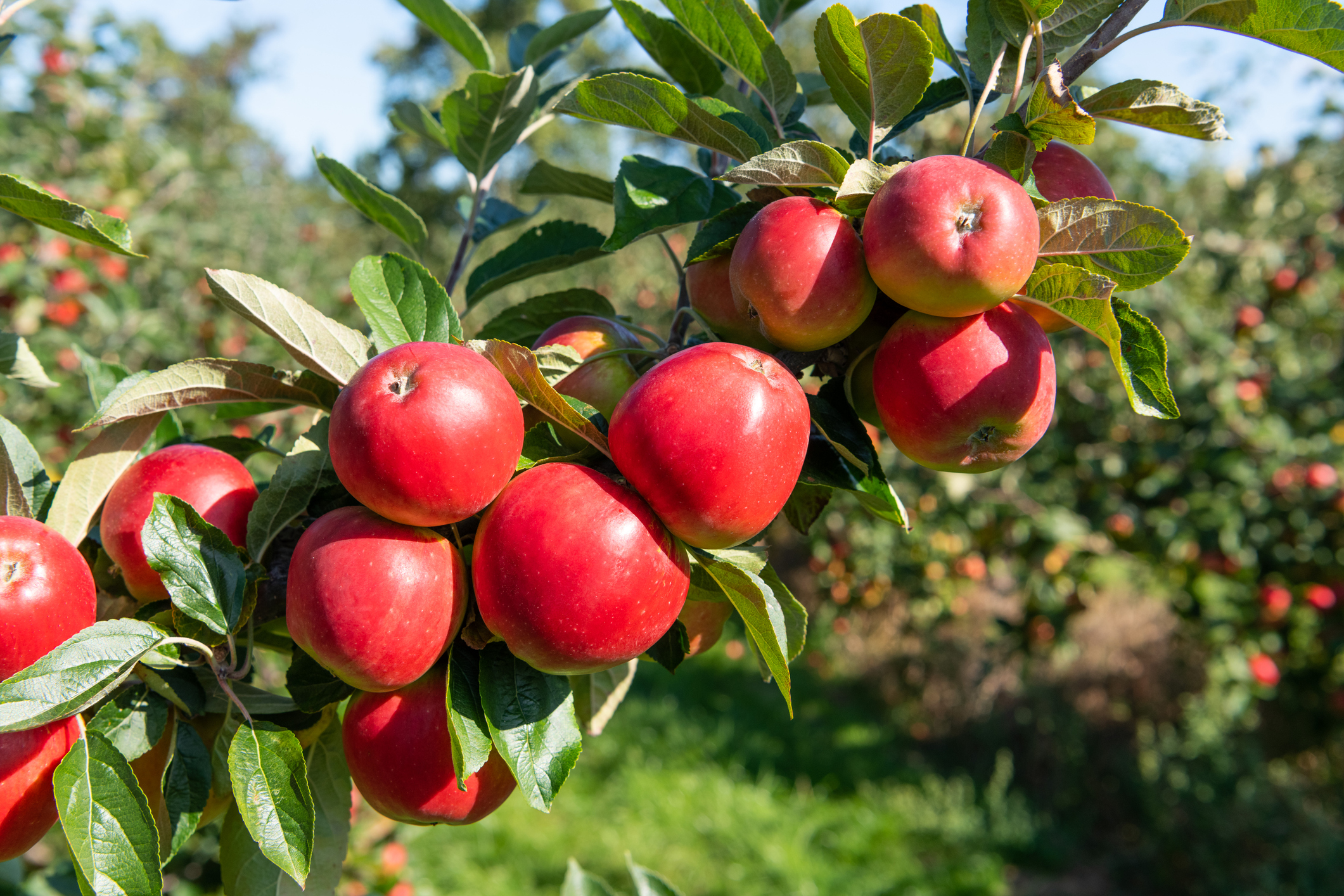
One of the easiest and most versatile options, apples are arguably the best fruit trees for beginners to grow.
‘The two main categories are dessert apples for eating, and cookers, with some good for both, such as heritage varieties ‘Blenheim Orange’ or ‘Court Pendu Plat’,’ says Clapp.
There are a number of self-fertile varieties of apple available, though it’s usually best to plant one or two different partner trees close by for cross-pollination.
‘When choosing, research nursery lists to ensure you have the right flowering group trees together,’ adds Clapp. ‘The flowers of a crab apple nearby could be another option; they will pollinate most apples and the trees are quite small so good for compact spaces.’
It’s important to know how to plant apple trees correctly to get the best result, as well as how to prune an apple tree at the right time.
Once established, apples are fairly low maintenance; sprinkle a general fertiliser around the base in spring, prune yearly, and you will have fruit in two to four years.
You can grow apples in hardiness zones 3-9, if you choose a suitable variety.
2. Fig tree
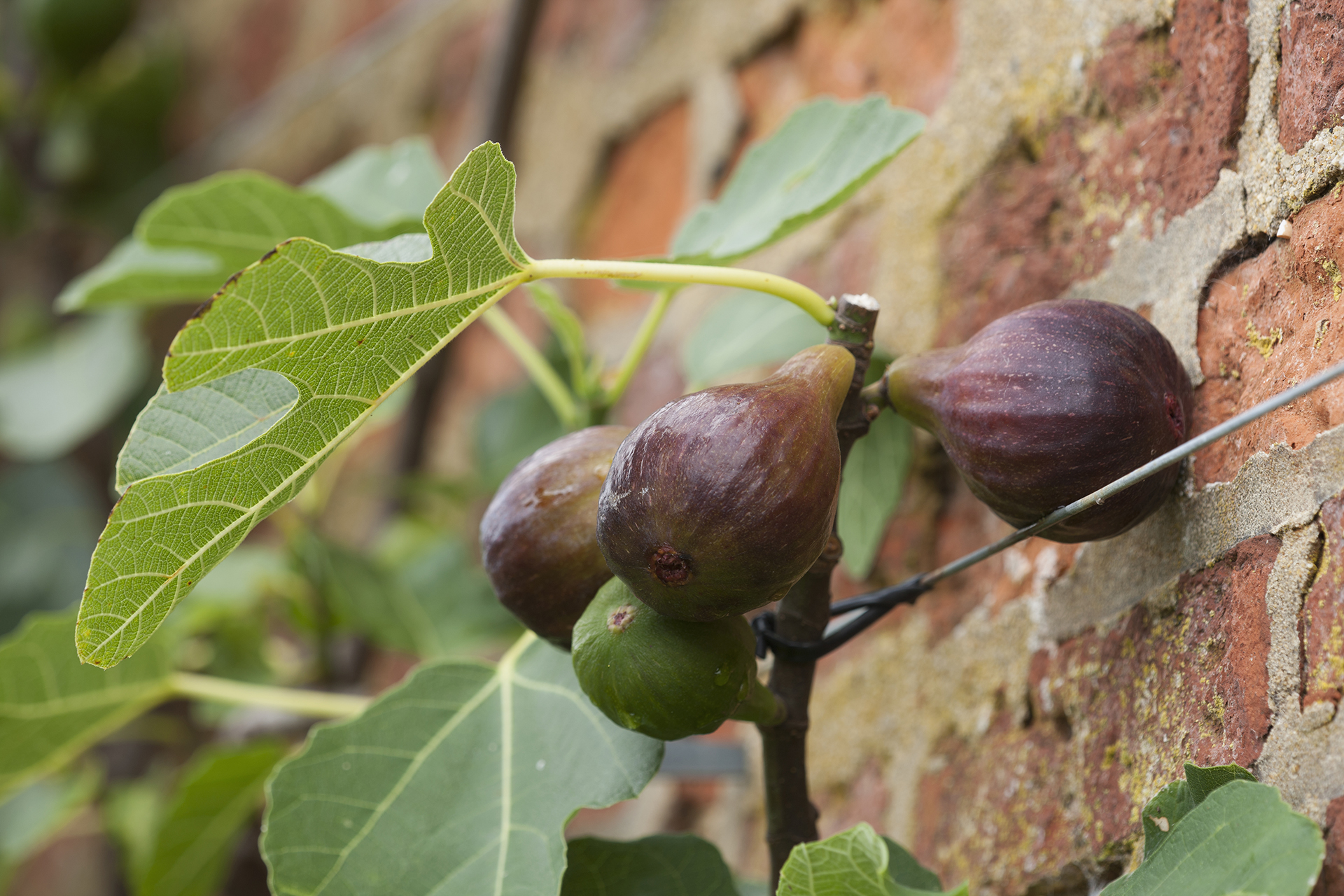
Eating home-grown figs feels like such a luxury, and the fruits make an indulgent addition to salads, tarts and desserts.
Figs need plenty of sun in order for the fruits to ripen, so consider growing a tree against a south-facing wall.
‘Growing it against a wall also helps to restrict the roots, which stresses the tree, and increases the fruit yield,’ says Alison Hilton, plants and trees expert at The Yard and Garden.
‘Ficus 'Brown Turkey' is a wonderful hardy fig variety that produces large tasty fruits that ripen into a purple brown color. It’s very easy to grow in most regions.’
Fig trees can be grown in zones 5-9, and are suitable for planting in containers. They should start to fruit within two to three years.
‘Water them well through summer and feed as the fruits develop,’ adds Clapp.
3. Lemon tree

One of the best trees to grow in pots, lemon trees add an exotic air to a patio and can double up as one of the best winter house plants.
‘If you live in a colder climate and have a sheltered area like a porch, lemon trees will bring a taste of the tropics to your landscaping,' says Lisa Tadewaldt, owner of Urban Forest Pro.
'The growth of these trees is usually stunted by colder weather enough that they can live in the pot for an extended period of time.'
You can even learn how to grow lemon from seed, to fill a sunroom or conservatory with these joyful trees.
The 'Meyer' variety is a particularly popular lemon tree as it flowers throughout the year, but this is best bought as a grafted tree.
Lemon trees require a lot of nutrients in order to thrive, so invest in a good citrus feed, and when you plant them be sure to introduce some grit or sharp sand to improve drainage. It’s best to let them dry out between waterings.
You also need to make sure you know how to prune lemon trees to increase fruit production.
While lemons are best grown in zones 9-11, you can grow a potted tree in cooler areas as long as you bring them into a porch or sunroom once the nights get chilly.
4. Plum tree
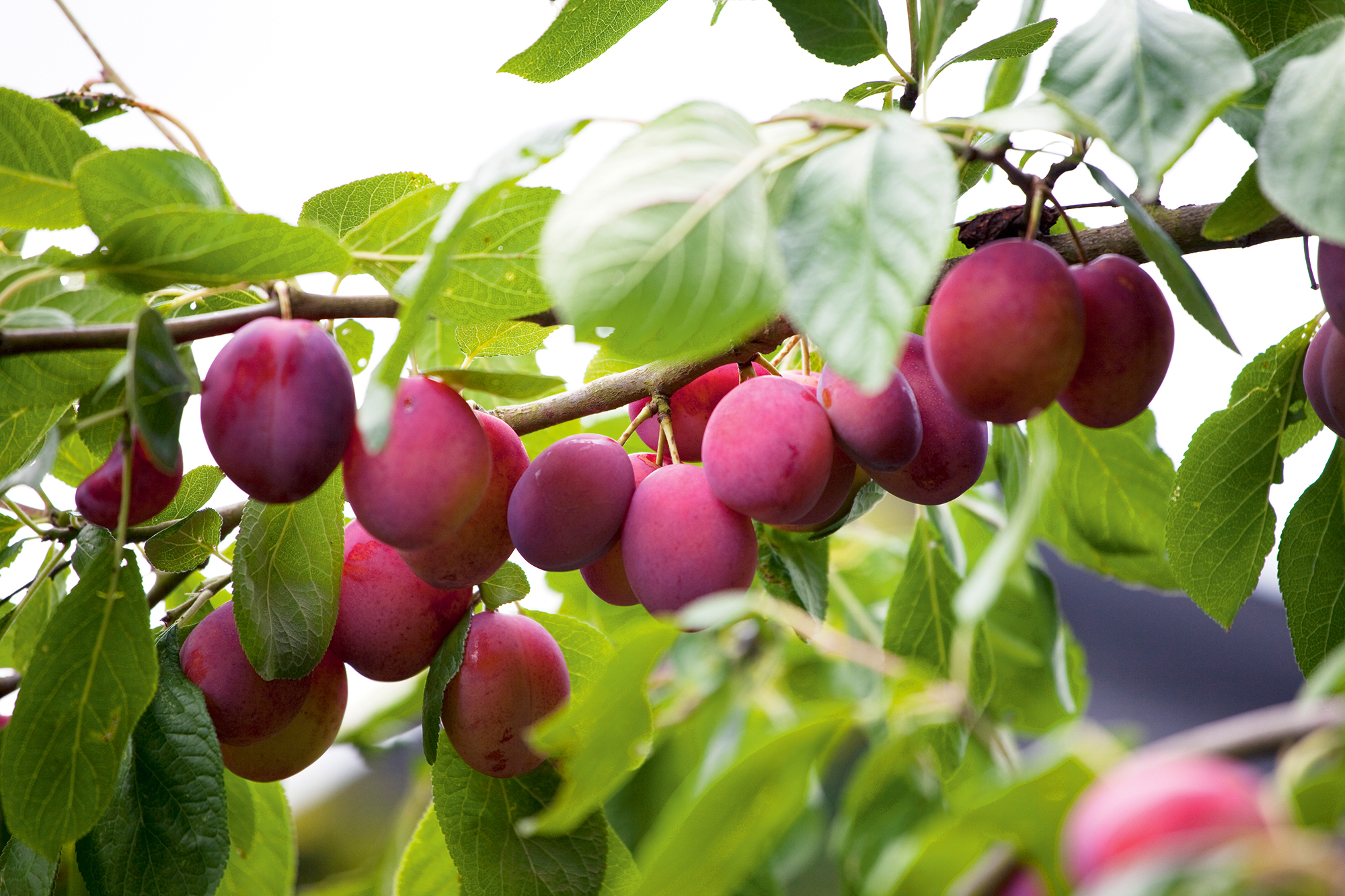
Plum trees are easy to grow and generous yielders. Cooking varieties make the most exquisite desserts and jams, while eating plums are a widely loved sweet fruit.
The trees don’t take up too much space – especially if grown on dwarf rootstock – meaning they can work in most backyards.
‘Dwarf rootstock means the plum variety you've picked, say the popular 'Victoria' plum, is grafted onto a much smaller tree root to control its eventual size,’ says Harris.
‘Buying dwarf rootstock doesn’t necessarily mean less fruit, it means less height and spread. With good care, you can grow an abundance of fruit on dwarf rootstock.’
Many plum trees are not self-fertile, requiring a partner tree, but some varieties can be planted on their own, including 'Victoria' and 'Majorie’s Seedling'. The latter is one of the best options for both eating and cooking, making it a truly versatile fruit.
Plum trees do require a warm, sheltered location and thrive in soils that retain moisture. Learn how to plant a plum tree correctly to give it the best chance of success.
Depending on the variety, you can grow plums in zones 3-9.
5. Pear tree
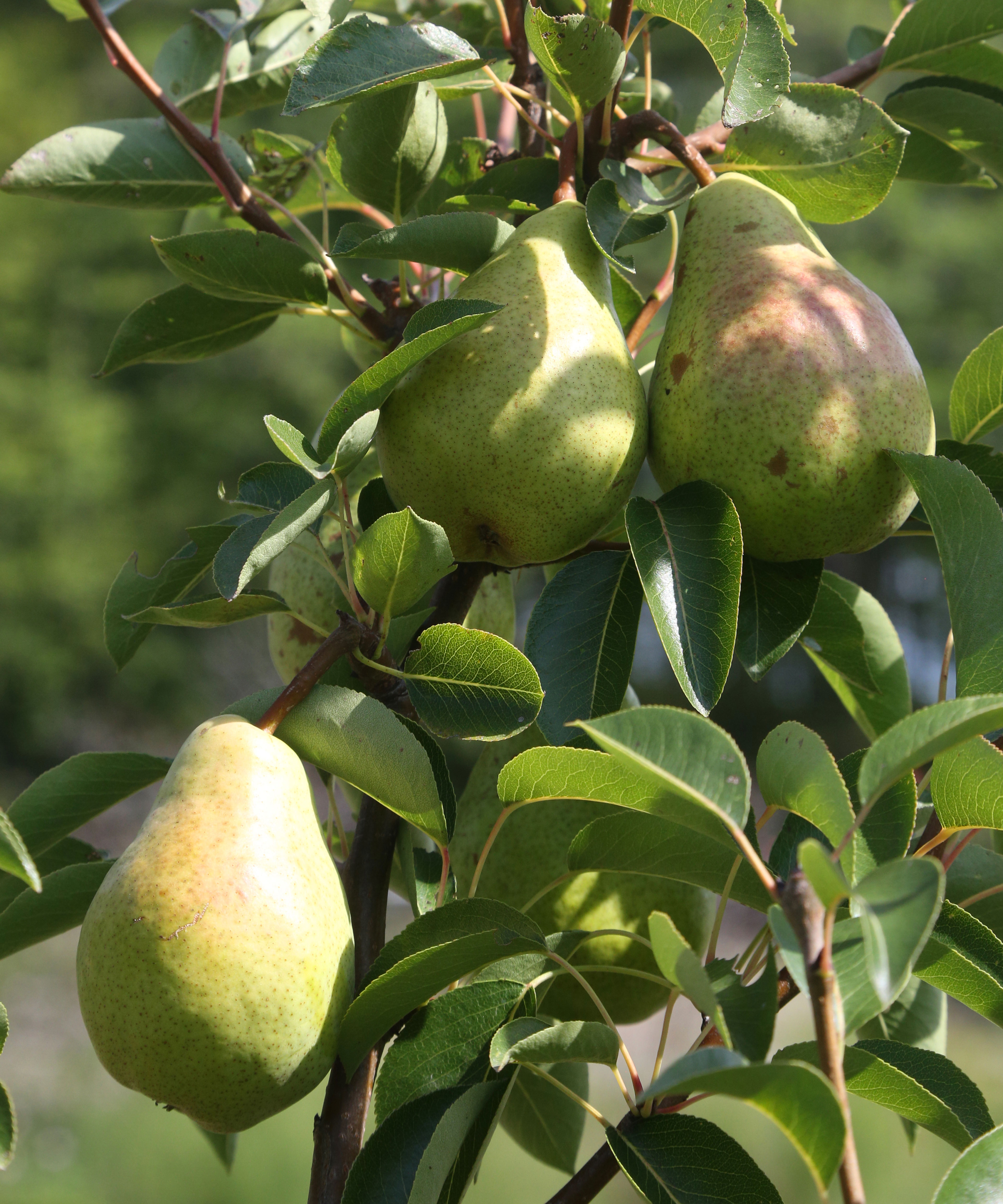
With stunning blossom in the spring and rich colors in the fall, pears are certainly one of the most attractive fruit trees to grow.
There is much variety to their flavor, from mellow and sweet to pleasantly sour and subtly spiced. While they can be enjoyed uncooked, they make sensational tarts, and simply poached pears make for the most luxurious dessert.
‘The fruits are categorised as either European, sweet and juicy, or Asian, nashi, which are firm but more bland,’ says Clapp.
‘Rootstocks are grafted onto quince roots; the most common is Quince A for espaliered and bush trees and Quince C for cordons and containers.’
Most pears are not self-fertile, requiring a partner tree – although notable exceptions to this are the dessert pears ‘Concorde’ and ‘Conference’.
‘Pears like rich, moist, well-drained soils and protection from winds, watering well in dry spells and feeding in spring,' adds Clapp. Also know how to prune pear trees to maximize fruit production.
'Harvest the fruit just before it is fully ripened. They will feel firm but look swollen with a slight change of colour. Pears ripen after picking and are ready to eat when they give into a little pressure at the stem end.’
Grow pears in zones 3-8. Trees will take five to seven years to fully crop.
6. Mulberry tree

Mulberries are rarely sold fresh in grocery stores, so they’re ideal for growing if you want to try something different.
Just the right amount of sweet and sour, mulberries taste a little similar to blackberries, but still have their own distinct flavor.
With its characteristic crooked branches, the mulberry is also an ancient fruit tree surrounded by myth and legend, and makes an attractive tree in the garden.
There are varieties available with red, black and white berries, although only the red and black berries are grown for eating.
‘Mulberries are fast-growing fruit trees, but they take a long time to produce fruit,’ says Tammy Sons, owner of Tennessee Nursery. They can reach up to 80ft, which makes them an ideal feature in the garden, but they may not fruit for 7-10 years.
However, it is possible to grow mulberry trees in a large pot when young, which is reported to speed up their cropping time to just 5 years.
They can grow in zones 4-9 and are widely tolerant of different soil types and part-shade. You can also train a mulberry tree as an espalier.
The berries are prone to staining, however, so don’t position a tree over a walkway.
7. Cherry tree
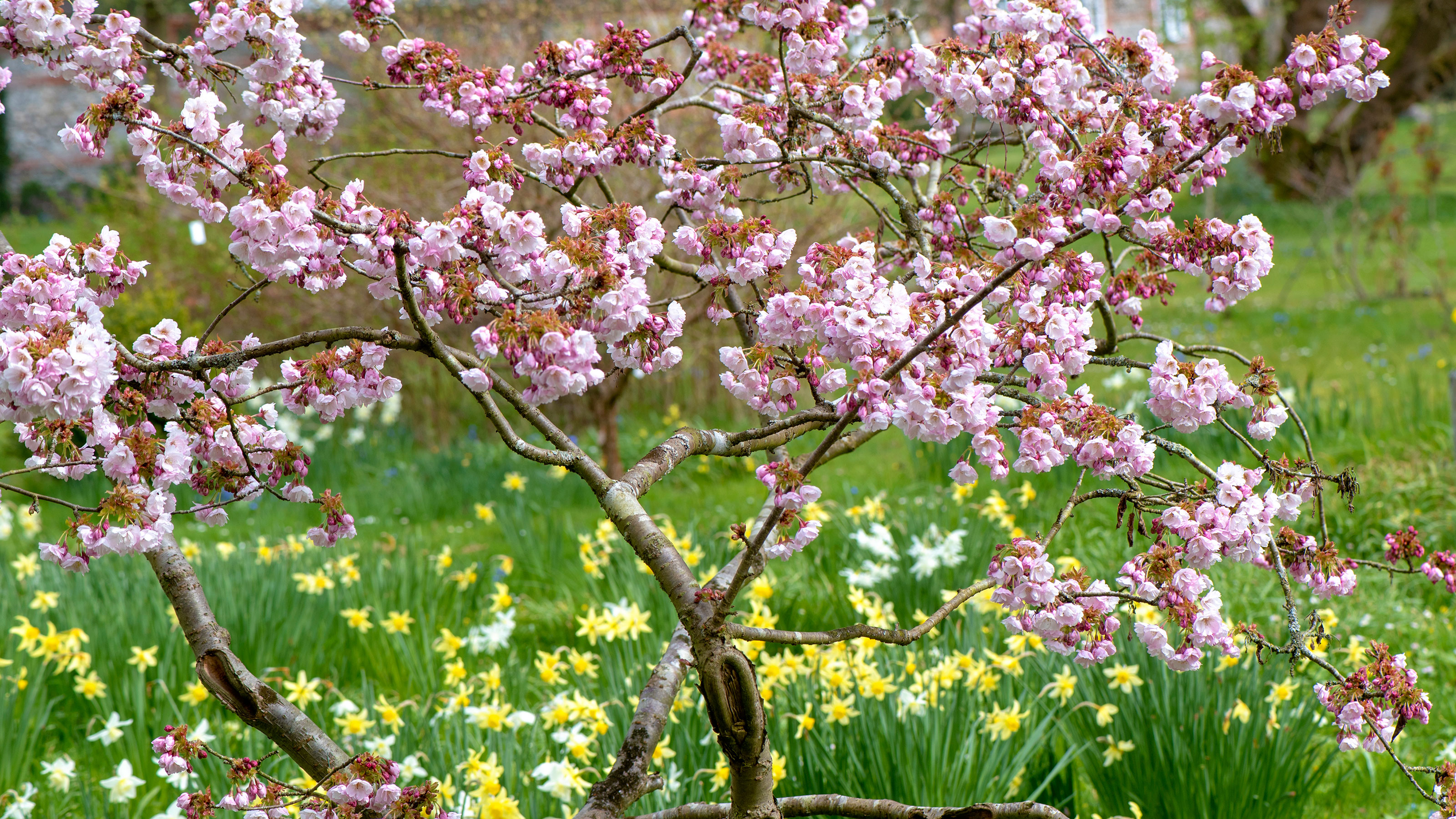
Cherry trees are some of the most beautiful fruit trees you can grow, with their enchanting blossom in the spring time. They are also striking trees with red berries in the summer, and one of the best trees for autumn color.
‘Cherry trees are by far one of the lowest maintenance and easiest to grow fruit trees,’ says Sons.
They are often grown on dwarf root stock, which makes them ideal for small yards and growing in pots.
There are several lovely varieties of cherry tree you can grow, with options for zones 3-9. ‘Sweetheat’ is a particularly delicious late-season variety and it self-fertile, so does not require a partner tree.
Cherries do need good, fertile soil and regular watering until they are established, at which point they are low maintenance. While sweet eating cherries need a good sunny spot, the sour (acid) cooking varieties can be planted in a shadier location.
Make sure you know how to plant cherry trees properly to ensure a successful crop, and also learn how to prune a cherry tree to ensure the ideal balance of old and new wood, which is essential to a good harvest.
Sweet cherries can be grown in zones 5-7 while sour varieties will thrive in zones 4-6.
8. Apricot tree
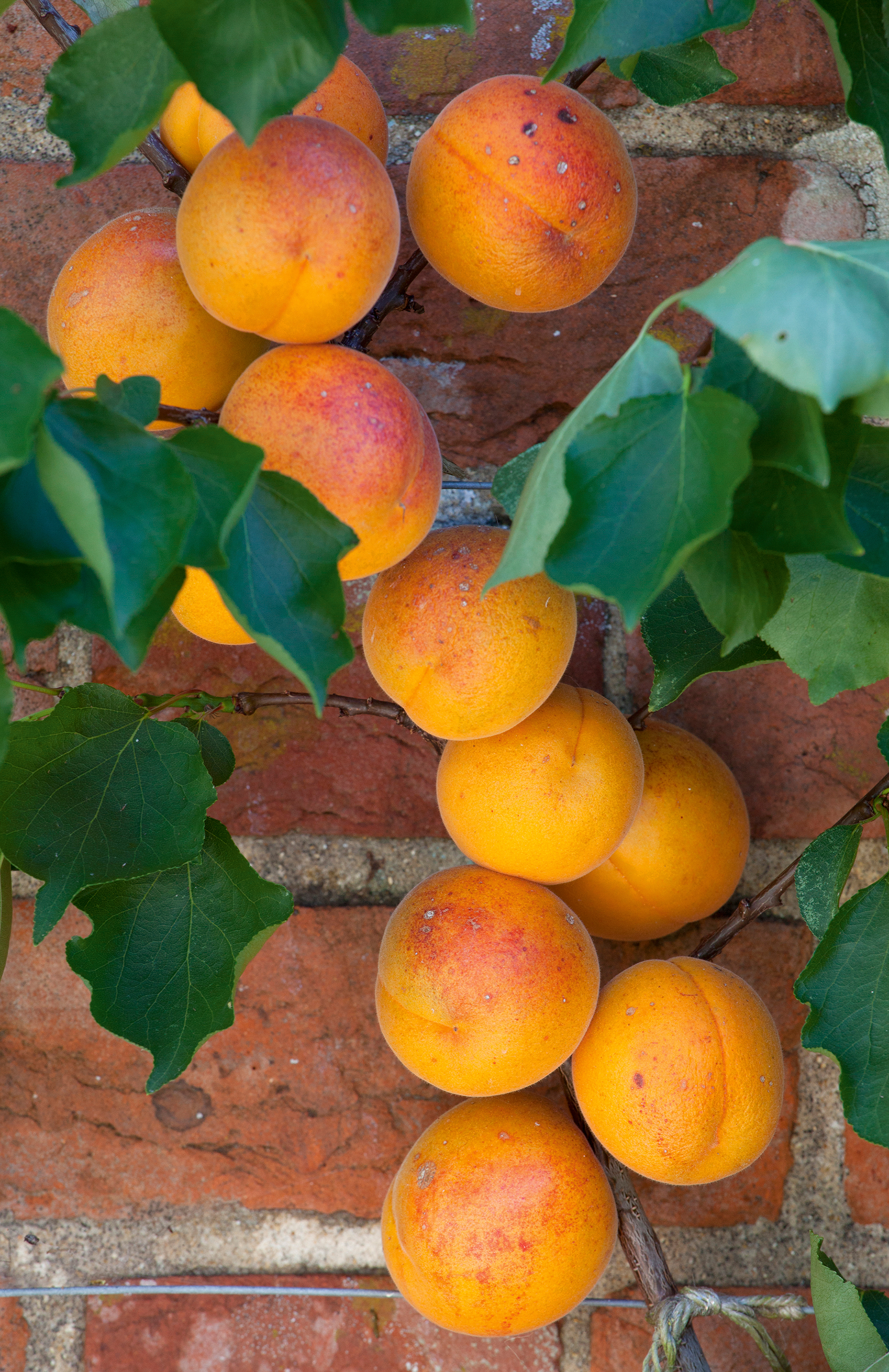
Delicious apricots are highly desirable fruits to grow, but they are less hardy than many other fruit trees so require the right conditions in order to thrive.
‘Apricots prefer slightly alkaline soil, but they are self-fertile, so won’t require a partner tree,’ says Clapp. ‘They do well left unpruned, but can be trained as a fan shape.’
In general it’s inadvisable to heavily prune apricot trees, as it can cause them irreparable damage.
Apricots are somewhat high maintenance – as they flower early in the season, there are often not enough pollinating insects around to help them pollinate naturally, meaning you’ll have to give them a helping hand to ensure a bumper crop.
Over the course of several days, you should pollinate the flowers using a soft brush, and lightly spray the tree with water to ensure it sticks.
The blossom is also sensitive to frost damage, so in areas where this might be an issue you should protect the trees overnight with horticultural fleece. You can grow them in zones 4-9.
If you can put in the work, however, you will be rewarded with one of the sweetest fruits that will taste unlike anything you can buy at the grocery store.
In terms of variety, 'Moorpark' is one of the most widely grown, but 'Tomcot' is a particularly large, juicy fruit. ‘Look for names that end in ‘cot’ as they produce large fruit,’ says Clapp.
9. Quince tree
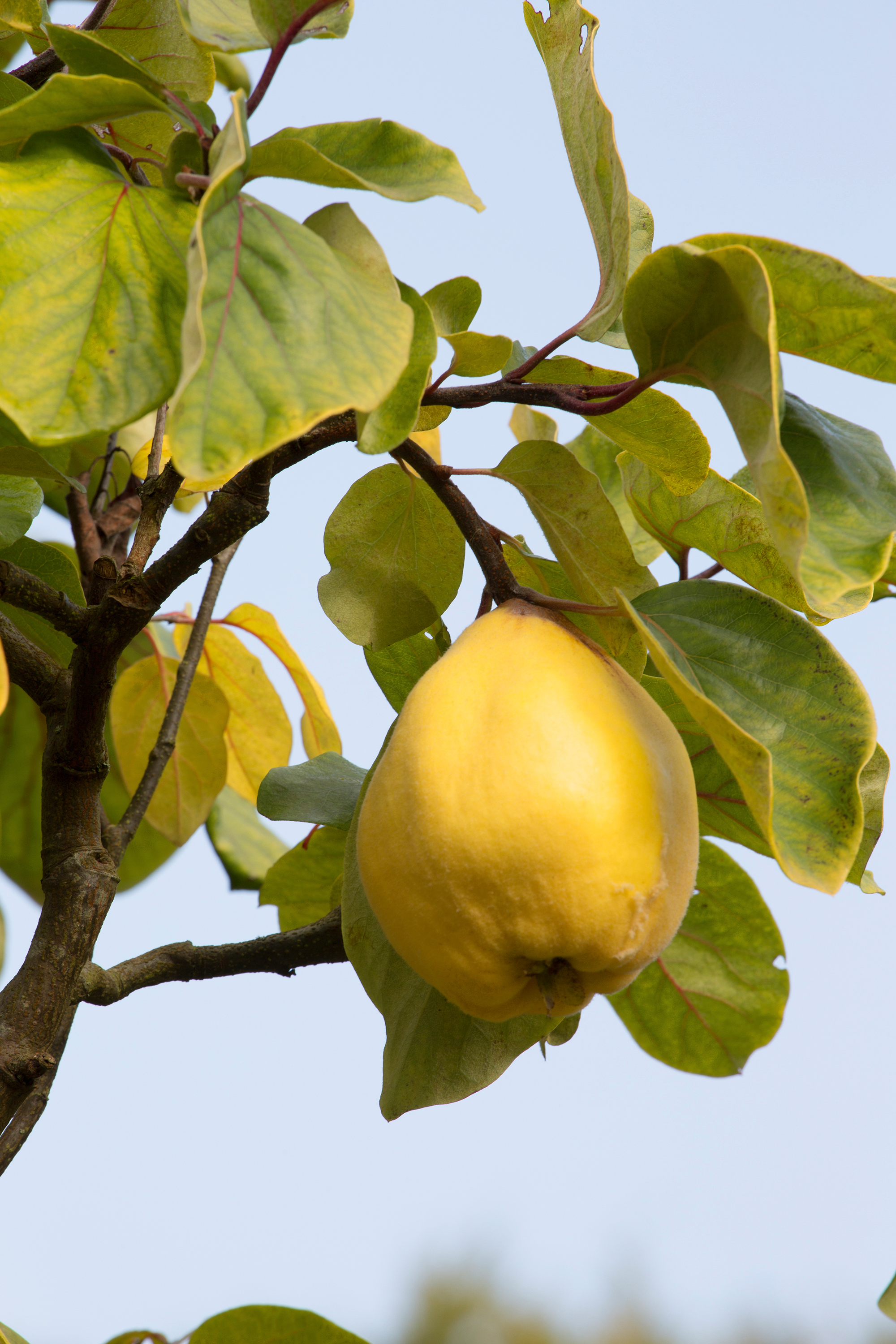
Though not common fruit trees, quinces have a long history and were eaten by the ancient Greeks and Romans.
These days, they are most often grown for their ornamental value as they have an attractive shape and most beautiful pink blossom – though don’t confuse them with the ornamental Japanese quince.
However, though the pear-shaped fruits are rather sour eaten raw, when cooked they are transformed. ‘Quinces make the most delicious jams and jellies,’ says Clapp. They also have a glorious fragrance, and can be used to perfume a room.
Grown in a sunny spot, they are also easy to grow and not prone to many issues. ‘Quinces just need need warmth and moisture to thrive,’ adds Clapp.
You will need to water the trees in hot summers, and prune once a year in the winter. You should also do an annual feed and mulch in the spring. All varieties are self-fertile.
While quinces are fairly hardy, suited to zones 4-9, in very cold areas you might need to protect the trees from the frost with horticultural fleece.
Quince trees are available on different sized rootstock, but there are some dwarf varieties ideal for smaller gardens. You should have fruit within 5 years.
10. Peach tree
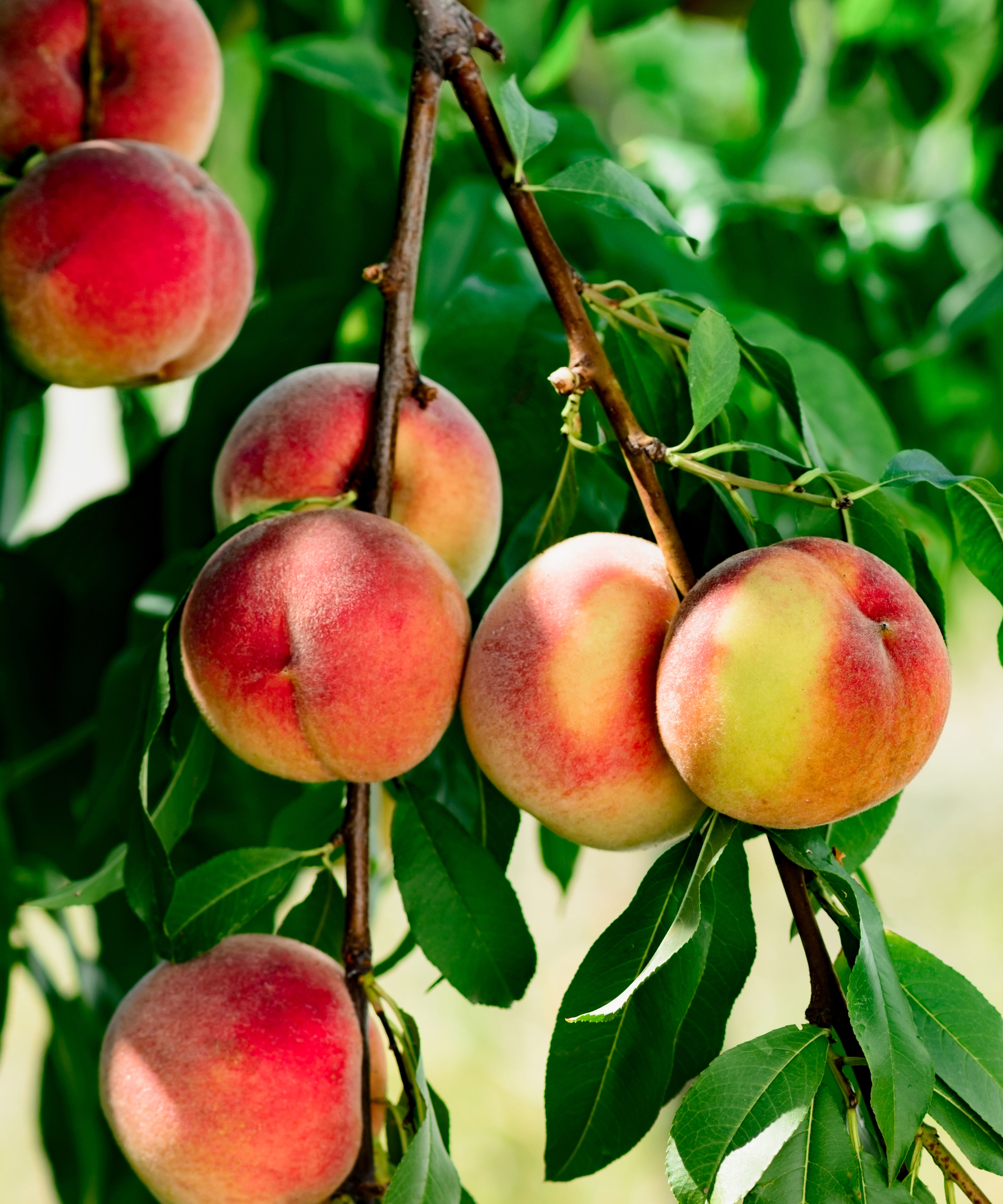
‘If you are seeking a more low-maintenance fruit tree, look to peaches, which require less care than many fruits,’ says Smith.
Alternatively you could consider growing nectarines, which are a smooth variety of peach.
One of the main selling points of peaches is that they are quick to crop, often producing some fruit after just one year. When fully grown, they can produce a bounty of fruit – more than enough for the whole family to enjoy.
Peaches aren’t too fussy about soil type as long as they have good drainage and are positioned in a sunny spot.
While they have beautiful pink blossom, peaches do flower early in the season, so if there is still frost in your area, the fruit yield will likely be affected.
The trees can be planted any time of year, though bare-root specimens will only be available in the colder months.
While peach trees are easy to look after, it’s important to keep them well watered in the warmer months, and they will benefit from regular feeding during the growing season.
Peaches thrive in zones 4-9 and they grow well in containers, which will keep the trees to a nice manageable size.
Which fruit tree is best?
'The best fruit tree will of course be the one you enjoy the fruit from most,’ says Smith.
You should also consider how much fruit you are likely to get, in order to make your endeavors worthwhile.
‘Popular fruit trees include the 'Bing' cherry, which can provide as much as 50-100 pounds of cherries per year, and then closely followed by the red 'Jonathan' apple.
'Be sure to check if they are self-pollinating or not. If not, you will need to plant at least two trees or varieties to bear fruit.'
Pawpaw trees are a little less common but produce delicious fruit and are a native US species.
What is the easiest fruit tree to grow?
The easiest fruit tree to grow for beginners is usually an apple tree, which has the benefit of being such a popular, versatile fruit.
'If you are seeking a more low-maintenance fruit tree, look to the plum or peach trees, which require less care than other fruit trees,' adds Smith.
Peach trees are also quick to crop, often producing fruit after just one year, so they are a good choice for impatient gardeners.
What's the best time to plant fruit trees?
The best time to plant fruit trees depends on whether you have bought less expensive bare-root trees, or container-grown plants.
Bare-root trees are only available in the colder months so must be planted then. Make sure you learn how to plant bare-root trees properly to help them to thrive.
‘Container grown plants can be planted any time of the year, but it is best done in winter,’ adds Clapp.
For a historic fruit tree, why not learn how to grow medlar trees, an ancient species with unusual fruits. Our guide has all the information.

Melanie has worked in homes and gardens media for two decades. Having previously served as Editor on Period Living magazine, and worked on Homes & Gardens, Gardening Etc, Real Homes, and Homebuilding & Renovating, she is now focusing on her passion for gardening as a Senior Editor at Gardening Know How. As a keen home grower, Melanie has experimented with pretty much every type of vegetable at some point – with mixed results. Often it is the simplest things that elude you, which may explain why she just can't seem to master zucchinis.